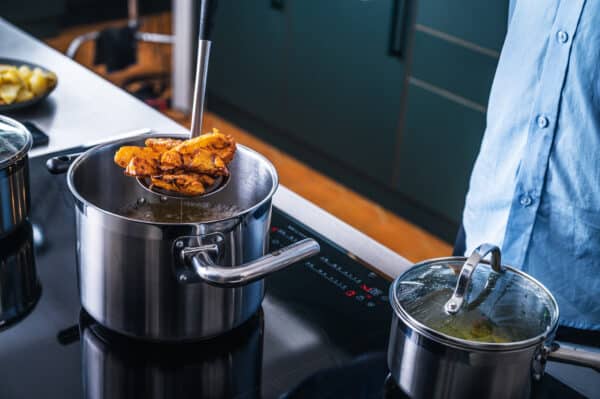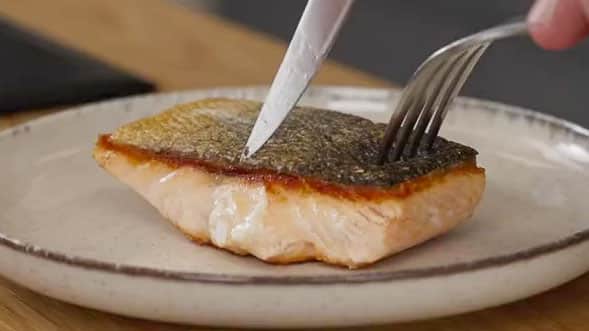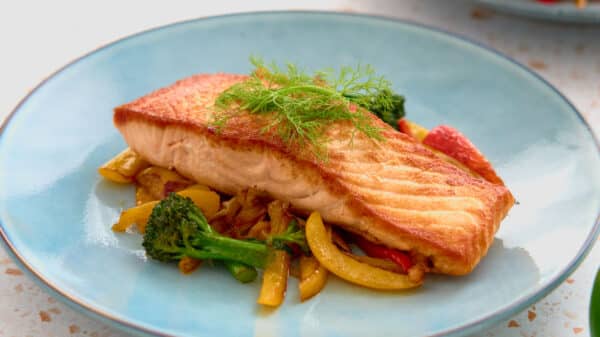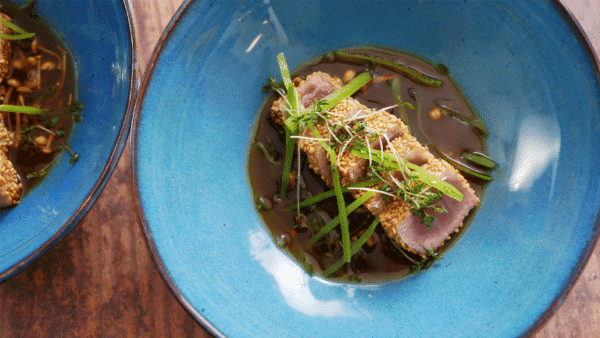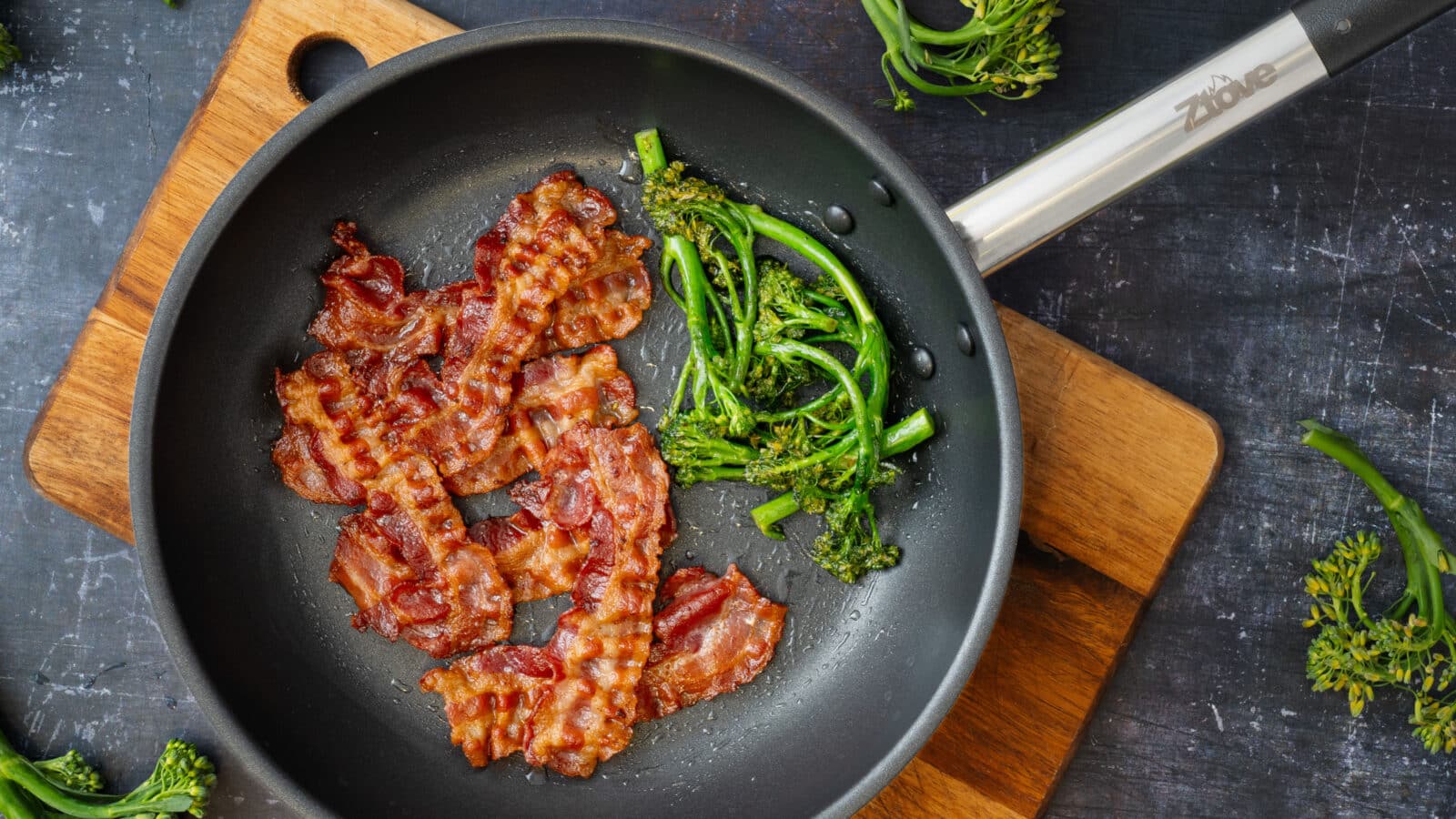Our best tips for mastering fish preparation
We have gathered 3 tips that will help you master the art of cooking fish. With these, you can prepare most types of fish to perfection.
Tip #1 – Pre-salt the fish before cooking
Pre-salting fish
It is a good idea to salt all fish in advance of cooking. The salt binds the liquid in the fish, giving the meat a firmer structure that is easier to work with when cooking.
When to salt fish?
Salt the fish half an hour to an hour before cooking, depending on the size. A thin fish, less than 2 cm thick, will need a shorter time than a thicker fish.
If you salt your fish less than an hour before cooking, you can leave the fish on the kitchen counter. If you salt it for longer, refrigerate it so it doesn’t spoil. Another tip is to remove the fish from the fridge half an hour before cooking. The reason for this is that room-temperature fish loses less liquid during cooking than cold fish making it easier to avoid the fish becoming dry.
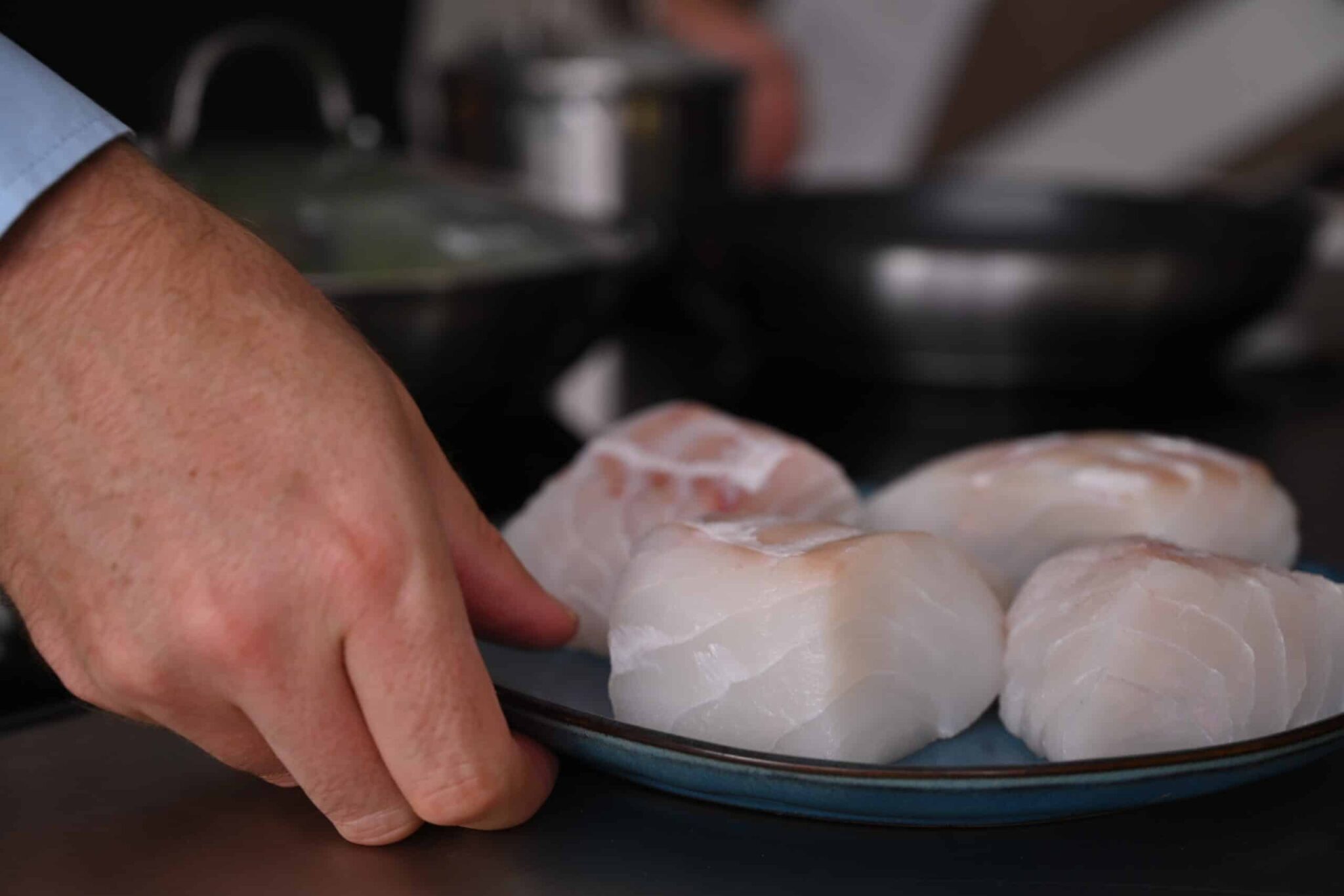
Tip #2 – Cook your fish according to species and size
Not all fish should be cooked the same way. The cooking temperature and time depends on the species, the cut, if the skin is left on or removed, if the bones are left in etc.
However, in general it can be said that:
- Thin fish: High heat for a shorter period, 190 – 210 ºC
- Thick fish: Lower heat for a longer period, 175 – 185 ºC
For many fish, it’s a good idea to cook them for a longer time on one side, allowing the heat to penetrate the fish. Then flip it and cook it shortly on the other side, to also give this side a bit of a sear.
A good example of a thick fish is salmon. Salmon can handle being cooked at a slightly higher heat. When cooking salmon filet with the skin on, first cook it for 5 minutes at 210 ºC on the skin side and then 1 minute on the other side. If the skin is removed then cook the salmon filet at 190 ºC instead, using the same method and time intervals. You’ll get perfectly cooked salmon every time.
Plaice is a thin fish and should be cooked at the same temperature as skinless salmon, but for a shorter time. Cut filets of the plaice and remove the skin. Bread the filet lightly in rye flour and cook at 190 ºC for about 2 minutes on each side.
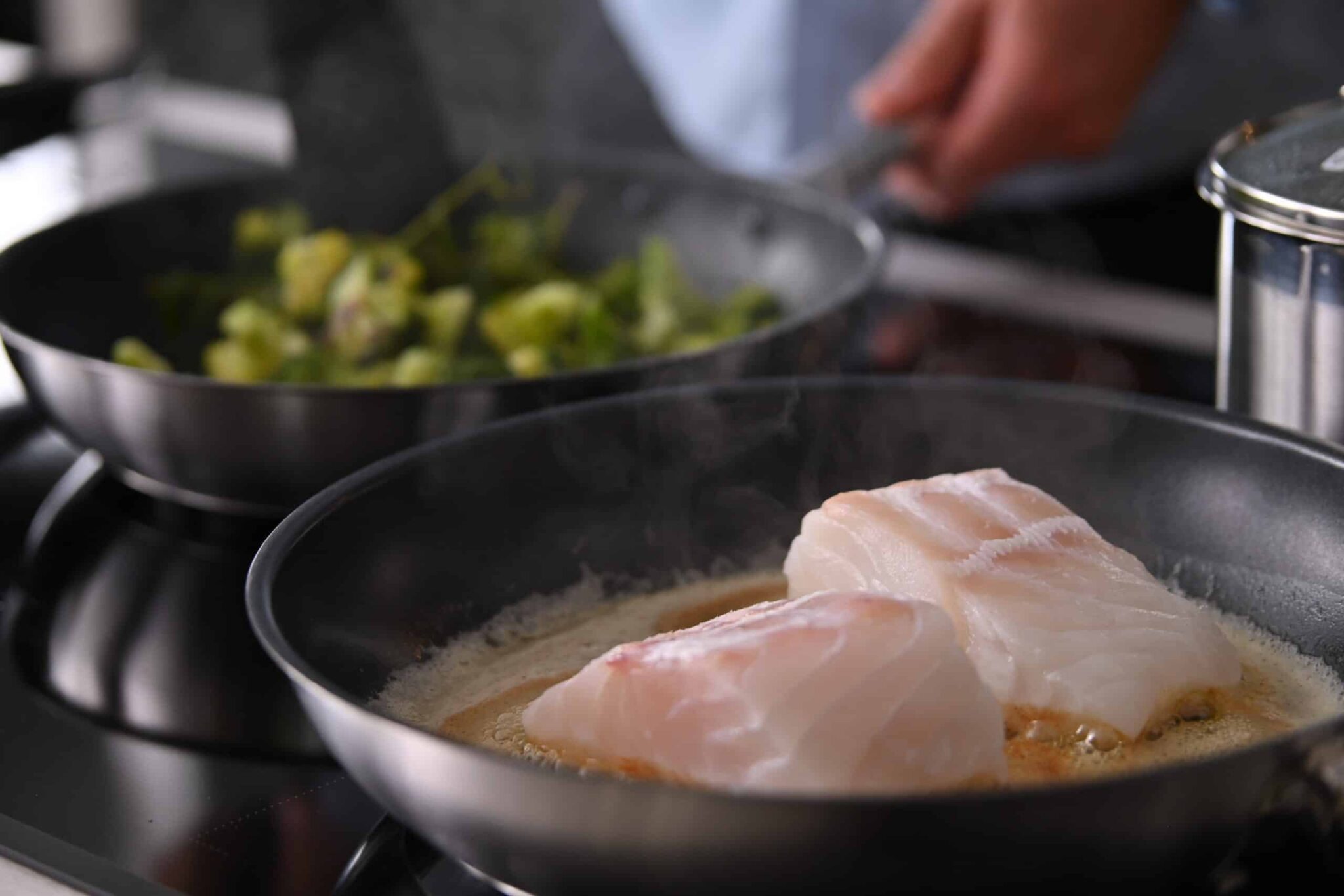
Should fish be cooked on both sides?
As a rule of thumb, breaded fish should be cooked on both sides to ensure that both sides get crispy. Be careful not to cook them for too long or the fish will become dry. Thicker pieces of fish, such as cod loin, can also benefit from being cooked on both sides.
For a regular fish filet, such as turbot, it is a good idea to only cook it on one side. Cook the fish at a slightly lower temperature and allow time for the heat to penetrate the flesh until the flesh on the top of the filet becomes translucent.
Cooking at a lower heat allows the fish more time to develop a crust and helps to avoid the fish becoming dry.
If it’s a thick piece of fish, it’s best to let it rest before serving, allowing the heat to work its way through the fish. This way you will achieve the desired temperature throughout the fish without overcooking it.
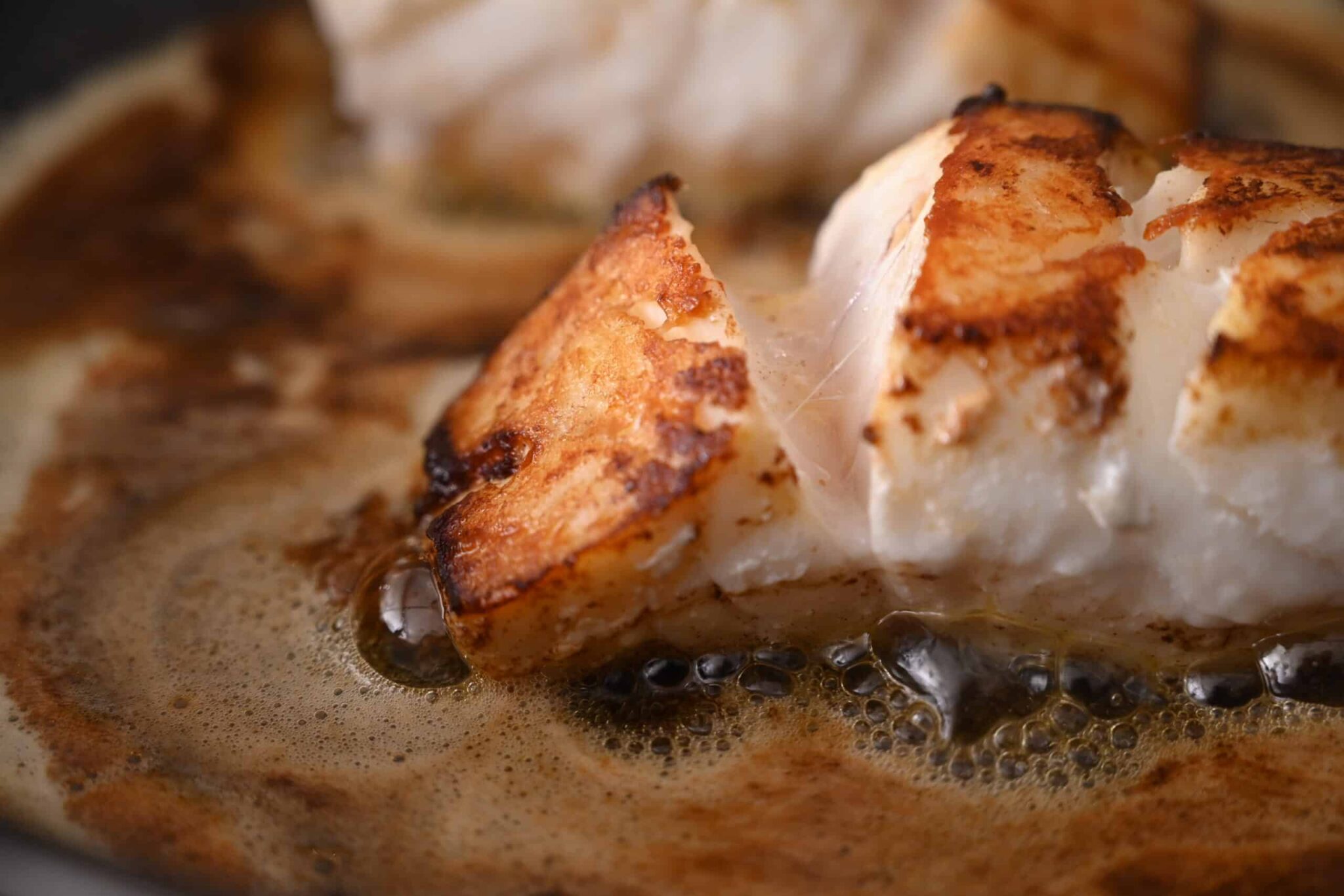
The most important temperatures for fish
Fish must be cooked depending on its type and thickness. Most fish should be cooked at 165 – 190 ºC – with the exception of salmon with the skin on, as it can tolerate higher temperatures.
Why is it important to cook fish at the right temperature?
When fish is cooked at too high a temperature for too long, the cell membranes in the flesh are destroyed, causing the fish to release liquid and become dry.
The same happens if frozen fish is thawed too quickly. This also destroys the cell membranes letting the moisture escape, leaving a dry and rubbery fish.
Cook your fish for as short a time as possible at the right temperature for the best results. The most important thing for a great result is the core temperature of the fish. For cod, it should ideally be around 45 ºC – generally, the core temperature for fish should be around 45-52 ºC.
Tip #3 – Flour your fish
This is not a necessary step for all fish. But it’s a good idea for fish with a looser flesh structure, such as cod and other similar fish. Especially if you buy the fish out of season, as you can find that the texture of the meat can be quite loose and appear a bit gritty or stringy. The cod season lasts from October to June.
Breaded fish needs to be cooked at higher temperatures than the same fish without breading. This is mainly due to three things:
- The heat is not in direct contact with the fish.
- The breading needs to become golden and crispy.
- The breading itself retains some of the juices in the fish, so the fish will not dry out as quickly.
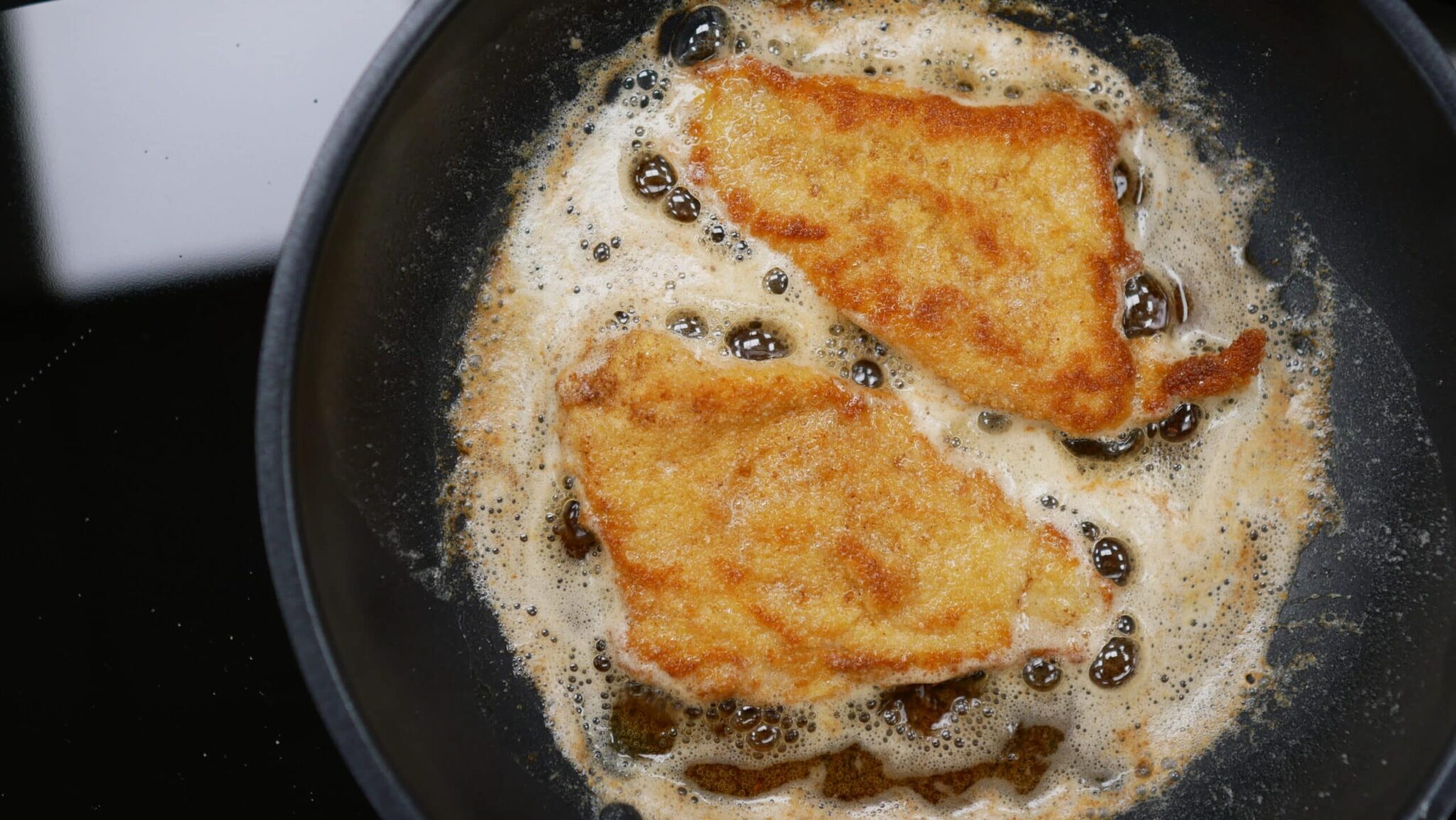
Can I use rye flour to bread fish?
Yes, you can use rye flour. However, the high gluten content in wheat flour gives a better crust and is better to hold the meat together.
Always remember to season the flour before using it to coat the fish. Fish can handle quite a lot of salt and when you coat the fish in flour , only about 10% of the added seasoning will actually end up on the fish. Therefore, you can safely season the flour liberally. Also there is no need to pre-salt the fish if you’re breading it.
Which spices and herbs are great with fish?
Seasonings such as dried dill, smoked paprika or lemon are great with firmer fish, such as monkfish, but the possibilities are endless. A great tip is that fish with a strong flavour in itself can handle more spices without the flavour of the fish being overpowered.
You can flavour your fish exactly as you like, just give it a go. The trick of turning fish in spiced flour can be used on all types of fish. It also gives a nice crispy crust.
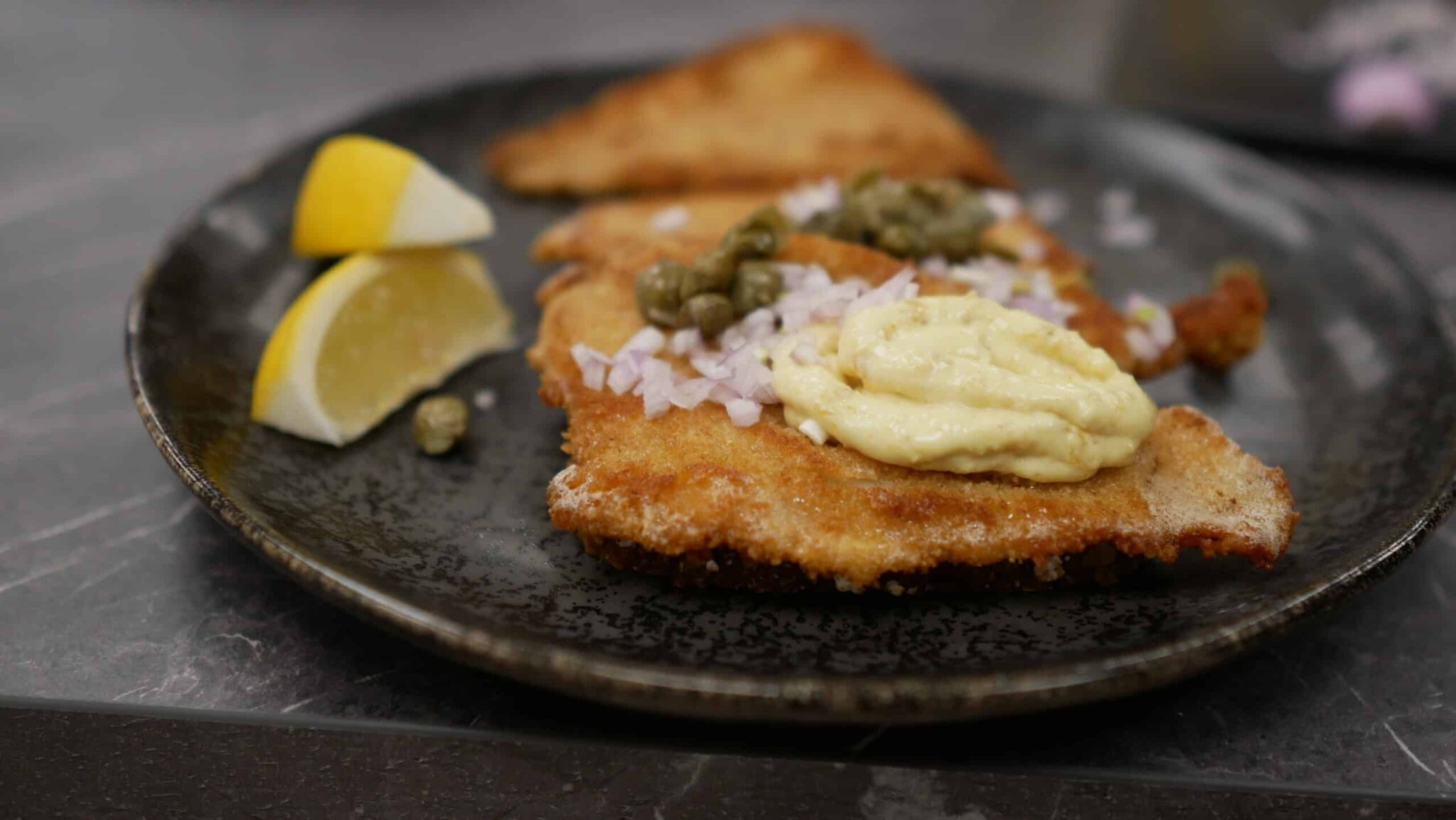
Bonus tip #4 – Use fresh fish
You get the best results by using fresh fish. If possible go to your local fishmonger. The fishmongers are skilled and can guide you to pick the fish in season, to ensure fresh fish with the optimal texture.
If you don’t live in a place where fresh fish is available, there is nothing wrong with buying it frozen. Make sure that the fish has been frozen as soon as possible after being caught and that you eat it within the expiry date.
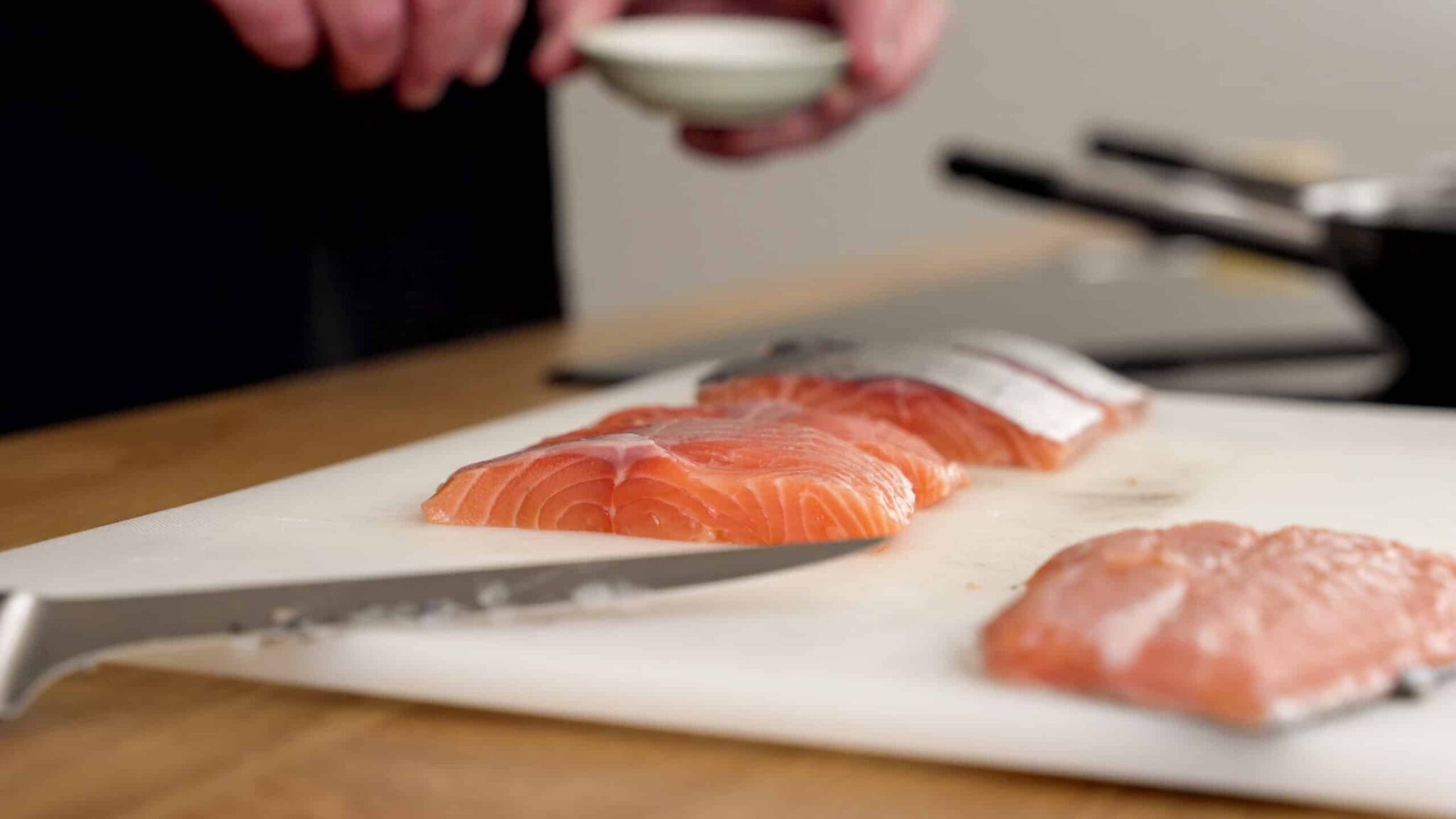
How long can fish keep in the freezer?
Lean fish can typically last 3-6 months in the freezer if they are frozen when they are really fresh, but the longer fish is stored in the freezer the drier it becomes.
Fatty fish such as salmon can last up to 3 months in the freezer. Other fatty fish may have a shorter shelf life. The shorter shelf life of fatty fish is due to the high content of unsaturated fat, which turns rancid more quickly.
Remember to defrost your fish slowly in the fridge to preserve the cell structure and thereby the juiciness of your fish. It’s a good idea to place the fish in the fridge to defrost 2 days before you plan to cook it.








